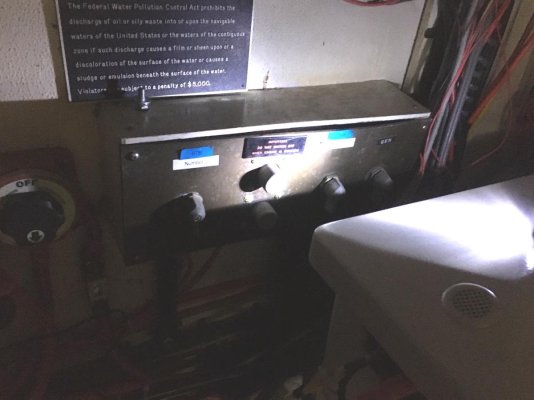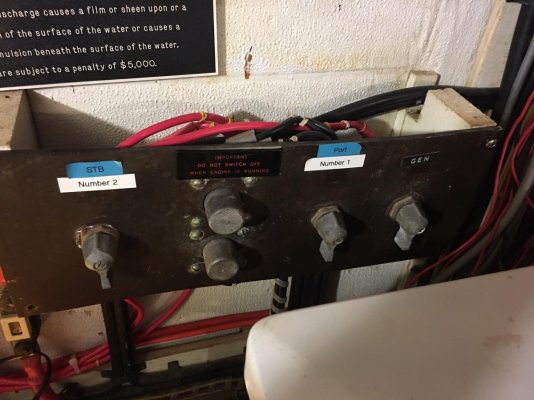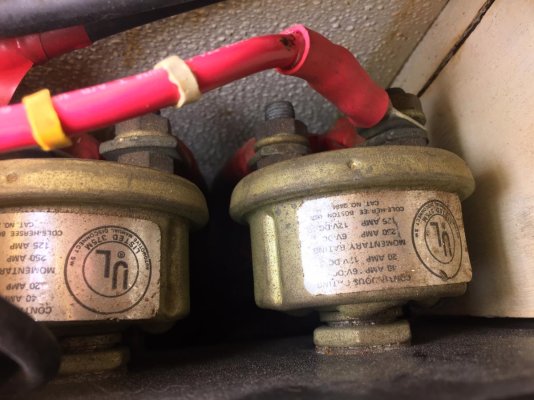rneedham
Member
- Joined
- Sep 8, 2020
- Messages
- 11
- Location
- United States
- Vessel Name
- Bayswater
- Vessel Make
- 1979 Grand Banks Classic
See attached picture first.
"I think" that this was the original 1979 battery selector switches from my Grand Banks Classic. It has 3 switches that control 3 batteries. It also has the battery charger wires going to the 3 posts in the back of the switches.
Now the fun stuff ... my engine alternators and not sending any volts back to the batteries. (yes they both put out 13.5 Volts). I traced the positive wire from the alternators to the 2 round "things" highlighted in the picture.
What are they?? Diodes? Anyone see this before?
I suspect that these 2 "diodes" went bad along the way and won't allow the charge to go from the alternators into the battery (my guess). Are they serviceable?
Thank you for any advice !
"I think" that this was the original 1979 battery selector switches from my Grand Banks Classic. It has 3 switches that control 3 batteries. It also has the battery charger wires going to the 3 posts in the back of the switches.
Now the fun stuff ... my engine alternators and not sending any volts back to the batteries. (yes they both put out 13.5 Volts). I traced the positive wire from the alternators to the 2 round "things" highlighted in the picture.
What are they?? Diodes? Anyone see this before?
I suspect that these 2 "diodes" went bad along the way and won't allow the charge to go from the alternators into the battery (my guess). Are they serviceable?
Thank you for any advice !










